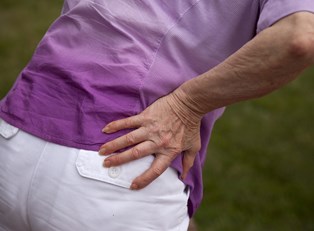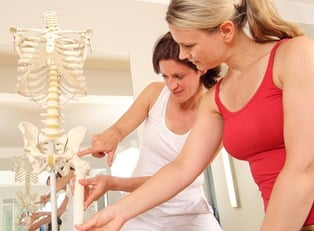Hip replacement surgery is a big deal, and recovering from one can sometimes feel like taking baby steps up the side of a mountain. If you are on that rugged road of recovery and you feel you can’t see the end because it seems to spiral upward forever, take some deep breaths and remember from where you’ve come. It may help to recall the days of debilitating pain and immobility that prompted your hip replacement surgery in the first place. Even with setbacks, chances are, you’re on a steady upward trend now, and there are better days ahead.
If you have already scaled the mountain of recovery and are becoming more active by the day, congratulations! Complying with your doctor’s instructions and physical therapist’s exercise regimen is paying off and you’re getting more out of life. No matter where you are on the post-operative road, here are five tips for living with your new hip replacement.
Travel smart.
If your next adventure calls for air travel, you may want to schedule in extra time for getting through airport security check points. In a study published in the Journal of Bone and Joint Surgery, 99 out of 143 patients reported that their travel was inconvenienced in some way by their hip replacement. Eighty-four percent of those patients admitted to triggering the security alarm and receiving an additional wand inspection. Twenty-five of those patients gave accounts of further inspections, including a pat-down or being taken to a private room to reveal their incision. The American Academy of Orthopaedic Surgeons (AAOS) recommends carrying a medical alert card and informing the security agents of your hip replacement in advance.
Some patients do experience sensitivity to metal detectors, so you may want to consult with your physician prior to air travel. Your doctor may also recommend medication to reduce your chances of swelling during and after your flight. Many patients with hip replacements purchase seats with more space around them to allow for stretching. Others simply get up and move around every 30 minutes or so while in flight.
Cautiously approach dental work.
With a prosthetic, your risk of infection is greater when you undergo dental work or other surgeries. Prior to any procedure, it is always a good idea to let your dentist and physician know that you’ve had a hip replacement. Your health care provider may prescribe a course prophylactic antibiotics to reduce your chances of developing an infection.
Practice weight management.
Before your hip replacement, your doctor may have suggested weight loss as a way of relieving your joint from added pressure. Maintaining a healthy weight after hip replacement surgery is equally important. It is always beneficial to eat well-balanced meals and drink plenty of fluids. Nourished from a healthy diet, you will be more energized to engage in routine low-impact activities. In turn, the exercise will help you arrive at or maintain a leaner body mass index and keep unwanted pressure off of your joints.
Make adjustments in your sex life.
Before your hip replacement, sex may have been something you avoided because of the pain associated with various sexual positions. But with your new hip replacement, you are free to engage in sexual activity as soon as your doctor gives you the okay. Both men and women report successful and pain-free sexual encounters, including climax, following hip replacement surgery. The Cleveland Clinic recommends taking the following precautions to protect your new joint during intercourse:
- Stretch to loosen up your joint beforehand
- Take mild pain relievers 20-30 minutes prior to sexual activity
- Support your feet and legs with pillows or rolled towels
- Take it slow, use caution with fast-paced repetitive movements
Additionally, you may consider trying new positions, possibly ones in which you can avoid stressing joints or bearing your partner’s weight.
Modify your movements.
After your hip replacement, you most likely learned new ways in which to perform everyday activities without dislocating your new ball and socket joint. Maintaining these modified movements and avoiding high-impact exercises such as running, skiing, and basketball will also help delay loosening and breakage from occurring throughout the life of your prosthetic. The AAOS suggests the following healthy habits:
- keeping your affected leg in front of you as you sit or stand
- keeping your affected leg facing forward
- sitting in tall chairs
- kneeling on the affected knee
The AAOS suggests that you avoid:
- twisting your affected leg
- sitting low chairs
- bending more than 90 degrees at the waist
- leaning forward when sitting



